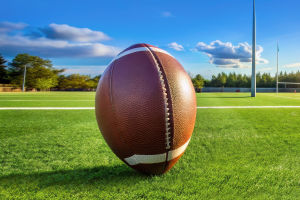Surfing is a thrilling blend of skill, nature, and adrenaline that draws surfers of all levels to the ocean. From the peaceful rhythm of the waves to the rush of gliding across the water, there's an undeniable magic to the experience.
In this article, we'll explore the history of surfing, the different types of surfboards, essential gear, and the top destinations where you can ride some of the most famous waves in the world.
Origins of Surfing
Surfing has a rich history that dates back centuries. Most historians agree that surfing originated in Polynesia, with early surfers using long wooden boards to ride the waves in the Pacific Ocean. The sport was deeply woven into the culture of ancient Polynesians and Hawaiians, where it was considered a sacred practice.
In the early 20th century, surfing gained popularity in the United States, particularly in Hawaii, where figures like Duke Kahanamoku played a major role in spreading the sport internationally.
By the 1960s, surfing became a cultural phenomenon, particularly in California, thanks to the rise of surf movies and iconic surf brands. Today, it is a global sport enjoyed by millions around the world, from the beaches of Australia to the shores of Africa.
Types of Surfboards
Surfers choose their boards based on the conditions they'll be surfing in and their skill level. There are several types of surfboards, each offering different experiences.
- Longboard: These boards are typically 8-10 feet long and are the most traditional type of surfboard. They offer great stability, making them ideal for beginners. Longboards are perfect for riding smaller waves and are often associated with the classic style of surfing.
- Shortboard: As the name suggests, shortboards are much shorter than longboards, typically around 6-7 feet long. They provide greater maneuverability and speed, making them perfect for advanced surfers who want to perform sharp turns and tricks on bigger waves.
- Funboard: This type of board is a hybrid between the longboard and shortboard, offering a good balance of stability and performance. Funboards are often recommended for surfers who are transitioning from a longboard to a shortboard.
- Fishboard: Fishboards are shorter and wider than shortboards and are perfect for riding small to medium-sized waves. These boards have a unique design with a swallowtail shape, which helps improve control and maneuverability.
Learning How to Surf
Surfing involves a sequence of skills that need to be learned and mastered over time. The basic steps include:
1. Watching the Waves: Before you get on your board, it's important to understand the waves. Surfers observe the ocean, waiting for the right wave to come their way.
2. Paddling: After you've spotted the perfect wave, you'll paddle out on your board to position yourself. Paddling is key to maintaining speed and reaching the right spot in the water to catch the wave.
3. Catching the Wave: Once you've paddled into the wave's direction, you'll need to time it right to catch the wave. Once the wave lifts your board, you'll start to ride it by standing up.
4. Standing Up: This is the most challenging part for beginners. To stand up, place your hands on the board, then push yourself up while keeping your feet shoulder-width apart and your knees slightly bent to maintain balance.
Essential Surfing Gear
To start surfing, there are a few essential pieces of gear that you'll need:
1. Surfboard: The surfboard is the most obvious piece of gear. It's important to choose the right type of board for your skill level and the waves you're going to surf.
2. Leash: A leash connects your surfboard to your ankle, ensuring that you won't lose your board if you wipe out. It's a safety essential for surfers of all levels.
3. Wax: Surfboard wax is applied to the top of the board to prevent slipping. It provides extra grip when paddling and riding waves.
4. Wetsuit: Depending on the temperature of the water, you may need a wetsuit to keep warm. A wetsuit helps you stay comfortable during long surf sessions in colder water.
Top Surfing Destinations
If you're a surf enthusiast, there are some iconic destinations around the world where you can catch the best waves:
- Hawaii: Known as the birthplace of modern surfing, Hawaii's beaches like Waikiki and Pipeline are legendary. The state offers perfect waves for all levels, from beginners to professional surfers.
- Australia: With its year-round great conditions, Australia's Gold Coast and Bondi Beach are prime locations for surfers looking for world-class waves.
- Bali, Indonesia: Bali is famous for its warm water and consistent surf breaks. Uluwatu and Kuta Beach are known for their incredible waves that attract surfers from around the globe.
- Portugal: Nazaré, in Portugal, is home to some of the biggest waves in the world. Surfers can ride massive waves here, some of which reach over 100 feet!
- Costa Rica: With its tropical climate and perfect waves, Costa Rica offers a variety of surf spots. Playa Grande and Tamarindo are popular among surfers of all levels.
Why Surfing Is So Special
Surfing is more than just a physical activity—it's a way to connect with nature, push personal limits, and experience pure joy. The thrill of riding a wave is unlike any other sport. Each wave is different, making every surf session unique. The sense of freedom and peace that comes with surfing can be addictive, which is why so many surfers find themselves coming back to the ocean again and again.
Are you ready to ride the waves? If you've been thinking about giving surfing a try, now might be the perfect time to catch your first wave. With the right equipment, the best surf spots, and a bit of practice, we can all experience the joy of surfing.
So grab a board, find your wave, and let the adventure begin!
Learn How To Surf In 10 Minutes
Video by How to Rip


